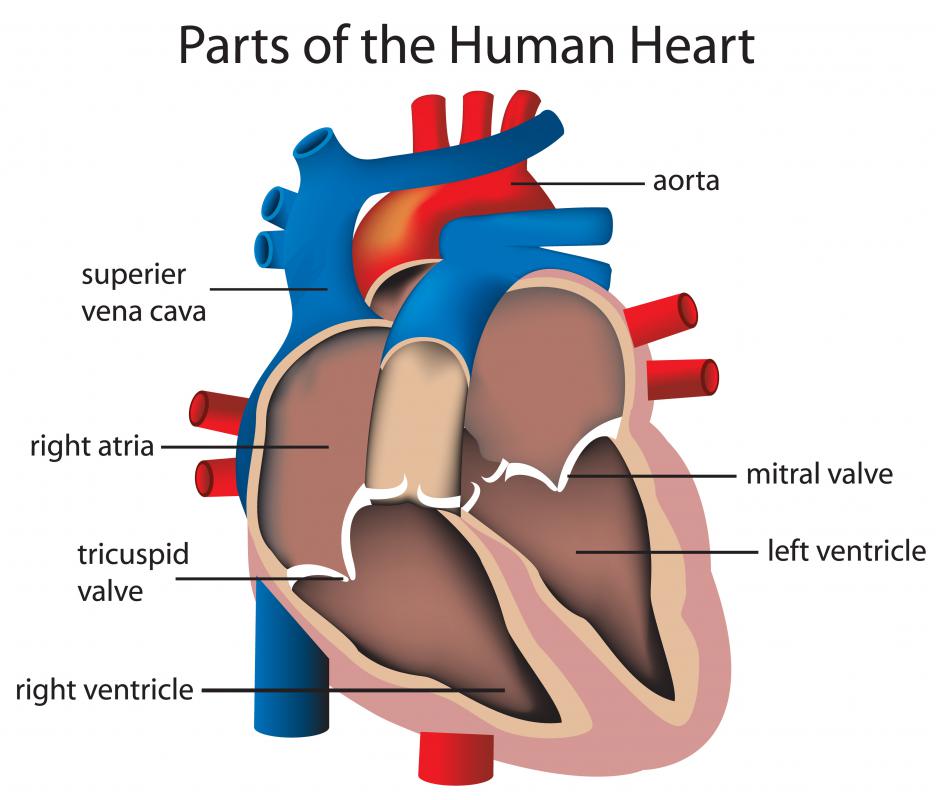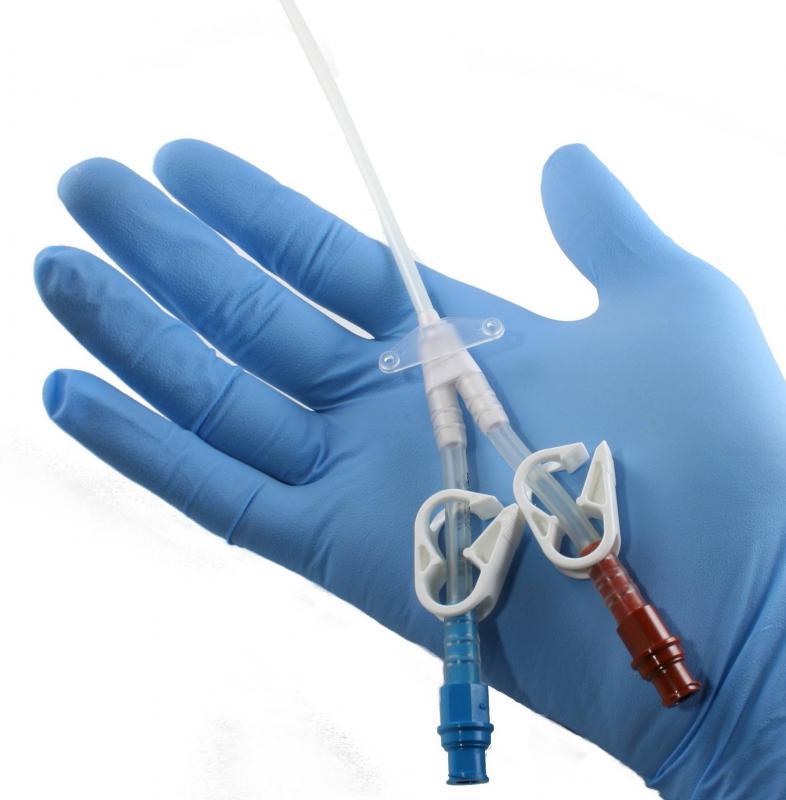At TheHealthBoard, we're committed to delivering accurate, trustworthy information. Our expert-authored content is rigorously fact-checked and sourced from credible authorities. Discover how we uphold the highest standards in providing you with reliable knowledge.
What Is a Mitral Valvuloplasty?
Mitral valvuloplasty is a semi-surgical treatment for mitral stenosis, or narrowing or thickening of the mitral valve. In this procedure, which is performed in a catheterization lab, the mitral valve is accessed through a catheter inserted in the groin. When the heart valve is reached, a balloon attached to the catheter is inflated to expand the narrowed or thickened area. Balloon inflation can have excellent results with the right candidates, and it is much easier to recover from than an actual surgical repair. On the other hand, mitral valvuloplasty is not suitable for all individuals, and it can have dangerous complications in a small percentage of patients.
The mitral valve is the vital conduit between the left atrium and ventricle. It allows blood to pass from one chamber to the other. If the valve is stenotic, however, it will not work efficiently, causing the heart to work harder to increase blood flow to the ventricle and the body.

Expanding the width of the valve through mitral valvuloplasty can be a good option for many patients. In some instances, this procedure requires repetition, either immediately or a few years later. Also, a number of individuals eventually require more extensive surgical repair or replacement of the mitral valve.
Many doctors refer to mitral valvuloplasty as a closed procedure because it doesn’t require surgical opening of the chest. Instead, a catheter is inserted into the groin and threaded up the blood vessels until it is inside the heart. Most people are at least partially awake when this procedure is done, but are made comfortable with medications. Patients may feel a little pressure during the valvuloplasty, but the blood vessels don’t have nerves and the actual catheter can’t be felt.

Patients can usually leave the hospital within a day after a successful mitral valvuloplasty procedure. Recovery time is minimal, as compared to the time it takes to recuperate from an open-heart surgery. Though there may be some bruising at the site of the catheter insertion, there is no sternal incision to recover from, and many individuals resume most normal activities in a week’s time.

It’s very important that patients be carefully selected for this procedure. Some predictors of better success include a mitral valve width at least 0.39 inches (1 cm) in diameter, age less than 55, and low levels of mitral valve regurgitation. Being male and having echocardiogram results that fit within certain parameters are also associated with higher success. Patients don’t necessarily have to fit in all of these categories in order to be good candidates, but some studies have found higher success levels in individuals who meet most or all of these criteria.

Though mitral valvuloplasty is not open-heart surgery, its potential complications shouldn’t be minimized. The enlargement of the valve may worsen its function. Blood clots and pieces of the valve can break off and lodge in arteries or organs like the heart and lungs. Occasionally, valvuloplasty does not work and a patient might immediately need a much more extensive surgical alternative. In other cases, this intervention is very successful, though as mentioned, it may not permanently fix valve problems.
AS FEATURED ON:
AS FEATURED ON:














Discuss this Article
Post your comments